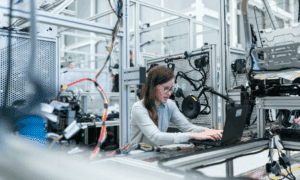Apple Inc said on Monday it will set up a new clean energy fund in China worth 720 million yuan ($99.22 million), coinciding with a Beijing visit of its CEO Tim Cook.
TakeAway Points:
- Apple Inc. announced Monday that it would establish a new renewable energy fund in China valued at 720 million yuan ($99.22 million).
- Xiaomi plans to deliver 350,000 EVs by 2025.
- Over the following five years, plan to open an abroad store.
- Appetite for ether ETFs has been tepid since their launch last July, but that could change if some of the regulatory wrinkles holding them back get “resolved,” according to Robert Mitchnick, head of digital assets at BlackRock.
New clean energy fund
Apple said in a statement that it is a move aimed at expanding its clean energy capacity in China, and is part of the company’s efforts to transition its supply chain to 100% renewable energy by 2030.
Xiaomi raises EV sales target, plans new overseas stores as Q4 revenue jumps
China’s Xiaomi on Tuesday reported an almost 50% jump in fourth-quarter revenue, beating analyst estimates, and raised its target for electric vehicle deliveries this year to 350,000 from 300,000.
The world’s third-largest smartphone maker, whose product lines extend to home appliances and cars, also said it planned to expand its store network across China this year and open 10,000 new Mi Home stores overseas in the next five years.
The company reported a 48.8% rise in fourth-quarter revenue to 109 billion yuan ($15.1 billion), beating the 103.94 billion yuan average of 17 analyst estimates compiled by LSEG.
Adjusted net profit jumped 69.4% year-on-year to 8.32 billion yuan, ahead of the average estimate of 6.399 billion yuan.
Xiaomi president Lu Weibing said on an earnings call that he saw great potential for the company’s products – from phones and tablets to cars – in overseas markets, though he added the complexity of expanding abroad was “quite high”.
Lu said the company aimed to start shipping cars overseas in 2027.
Xiaomi’s Hong Kong-listed shares closed up 3.3% before the earnings release. The stock has surged 284% over the past 12 months amid investor enthusiasm for its EV plans.
SU7 sedan
Xiaomi began manufacturing EVs last year with the launch of the SU7 sedan after selling smartphones, household appliances and smart gadgets for most of its 15-year history.
It reported 32.1 billion yuan in revenue for its EV business in 2024, delivering more than 135,000 SU7 sedans. The adjusted net loss related to its EV and other new initiatives reached 6.2 billion yuan.
Xiaomi’s fourth-quarter global smartphone shipments rose 5% from a year earlier to 42.7 million handsets, ranking it third globally, with a market share of 13%, data from researcher Canalys showed.
In China, its largest market, shipments surged 29% to 12.2 million handsets over the same period, ranking it fourth, with a market share of 16%, according to the Canalys data.
Lu said Xiaomi aimed to ship 180 million smartphones this year, versus 168.5 million in 2024, adding the company would invest up to 8 billion yuan, about a quarter of its total research and development budget this year, in AI-related initiatives.
BlackRock’s head of digital assets seeks way forward for ETFs
Robert Mitchnick, head of digital assets at BlackRock, stated that if some of the regulatory issues preventing ether ETFs from being launched last July are “resolved,” the sluggish appetite for them may change.
There’s a widely held view that the success of ether ETFs has been “meh” compared to the explosive growth in funds tracking bitcoin, Mitchnick said at the Digital Asset Summit in New York City Thursday. Though he sees that as a “misconception,” he acknowledged that the inability to earn a staking yield on the funds is likely one thing holding them back.
“There’s obviously a next phase in the potential evolution of [ether ETFs],” he said. “An ETF, it’s turned out, has been a really, really compelling vehicle through which to hold bitcoin for lots of different investor types. There’s no question it’s less perfect for ETH today without staking. A staking yield is a meaningful part of how you can generate investment return in this space, and all the [ether] ETFs at launch did not have staking.”
Staking is a way for investors to earn passive yield on their cryptocurrency holdings by locking tokens up on the network for a period of time. It allows investors to put their crypto to work if they’re not planning to sell it anytime soon.
“It’s not a particularly easy problem,” he explained. “It’s not as simple as … a new administration just green-lighting something and then boom, we’re all good, off to the races. There are a lot of fairly complex challenges that have to be figured out, but if that can get figured out, then it’s going to be sort of a step change upward in terms of what we see the activity around those products is.”



































